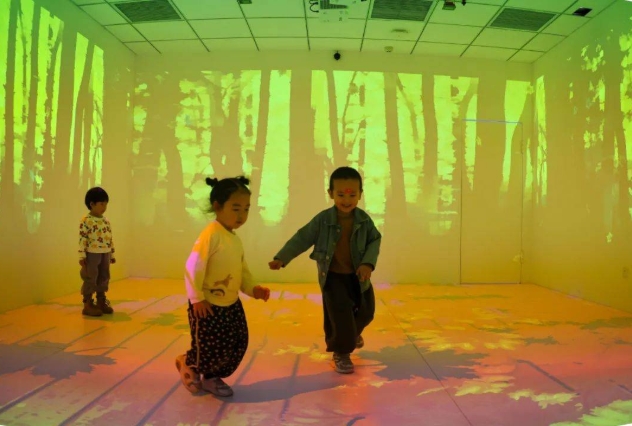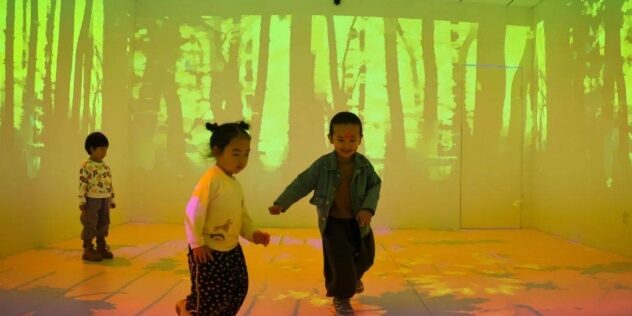School history museums are sacred spaces that embody the spirit and legacy of educational institutions. However, traditional methods of showcasing history—static display boards and artifacts locked behind glass cases—often fail to ignite the passion of younger generations. The one-way flow of information and the lack of engaging spatial experiences can make these museums feel outdated in today’s dynamic communication landscape. So, how can we breathe new life into dusty historical narratives? How can we ensure the torch of school spirit is passed on through generations? The answer lies in leveraging cutting-edge technologies like immersive projection and interactive multimedia installations to revolutionize the visitor experience and amplify promotional impact.

The Power of Immersive Projection: Turning History into a Living Experience
Immersive projection technology is a game-changer for school history museums, injecting unparalleled narrative energy into physical spaces. By breaking down traditional boundaries, it envelops visitors in a dynamic world of light and shadow. Imagine stepping into an exhibit where high-lumen, multi-channel projectors work in harmony to create stunning visuals across walls, floors, and even ceilings. This 360-degree storytelling environment transforms visitors from passive observers into active participants in an emotional journey through time.
For instance, a reenactment of a school’s founding moment could come alive with projected images of historical figures, archival footage, and ambient sounds, immersing visitors in the era. This sensory-rich experience fosters a deeper connection to the school’s heritage, making history not just something to read about but something to feel. From a promotional standpoint, such unique experiences become powerful talking points, encouraging word-of-mouth sharing and boosting the museum’s appeal on social media platforms.
Interactive Slide Screens: Making History Tangible and Engaging
One of the challenges in presenting history is organizing complex timelines in a way that’s both clear and captivating. Interactive slide screens offer an innovative solution through their unique blend of physical movement and digital interaction. Mounted on carefully designed linear or circular tracks, high-definition screens can be manually or electrically moved by visitors. As the screen glides to a specific historical milestone, built-in sensors trigger corresponding content—be it rare photographs, videos, or even 3D reconstructions of past events.
This hands-on approach allows visitors to “slide through time,” creating a tactile connection to the school’s journey. By physically engaging with the exhibit, they build a mental map of key events, influential figures, and transformative moments. For younger audiences accustomed to interactive digital experiences, this method turns a potentially dry chronology into an exciting, explorative adventure. Museums adopting such technology can position themselves as forward-thinking, enhancing their appeal in online searches for innovative educational attractions.
Digital Sandboxes: Visualizing Campus Evolution with Precision
The physical transformation of a school’s campus often mirrors its growth and aspirations. Digital sandbox technology, which combines traditional physical models with advanced projection mapping, brings this evolution to life with stunning clarity. High-precision renderings of the campus’s geography and architecture allow visitors to witness changes across decades at the touch of a button or through gesture-based interactions.
Imagine toggling between the school’s humble beginnings, its current layout, and even future development plans, all projected onto a detailed 3D model. This interactive visualization not only educates but also inspires pride in the institution’s progress. From an SEO perspective, content about such unique features can target niche keywords like “interactive school history exhibits” or “digital campus tours,” driving targeted traffic to the museum’s website.
Bridging the Gap Between Past and Present with Emotional Engagement
Immersive projection and interactive installations are more than just flashy gadgets; they are emotion-driven tools that redefine how school history is communicated. By dissolving the barriers between history and the present, between passive observation and active participation, these technologies turn visitors into storytellers and ambassadors of the school’s legacy.
Instead of merely absorbing facts, visitors become emotionally invested—whether it’s through reliving a pivotal moment via immersive projection, exploring timelines with interactive screens, or marveling at campus transformations through digital sandboxes. This shift from passive reception to active engagement ensures that the school’s spirit resonates deeply, encouraging visitors to share their experiences online and offline.
Why Adopt These Technologies for School History Museums?
- Enhanced Visitor Engagement: Immersive and interactive exhibits captivate audiences, especially tech-savvy younger generations, ensuring longer visits and repeat attendance.
- Stronger Emotional Connection: By making history a lived experience, these tools foster a sense of pride and belonging among students, alumni, and visitors.
- Amplified Promotional Reach: Unique, shareable experiences naturally generate buzz on social media, improving the museum’s visibility and attracting diverse audiences.
- Future-Proofing Legacy: Adopting modern technology positions the museum as a cutting-edge cultural space, appealing to both local communities and global visitors searching for innovative educational experiences.
Conclusion: Transforming School History Museums into Beacons of Inspiration
School history museums hold the key to preserving and passing on institutional legacies, but they must evolve to meet modern expectations. By embracing immersive projection and interactive multimedia installations, these spaces can transcend traditional limitations, offering visitors not just a glimpse of the past but a profound, participatory journey. This transformation doesn’t just enrich the visitor experience—it also supercharges promotional efforts, making the museum a must-visit destination both online and offline.
As schools invest in these technologies, they’re not just updating exhibits; they’re redefining how history is felt, understood, and shared. Ready to bring your school’s history to life? Start exploring immersive solutions today, and watch as your museum becomes a vibrant hub of inspiration for generations to come.







